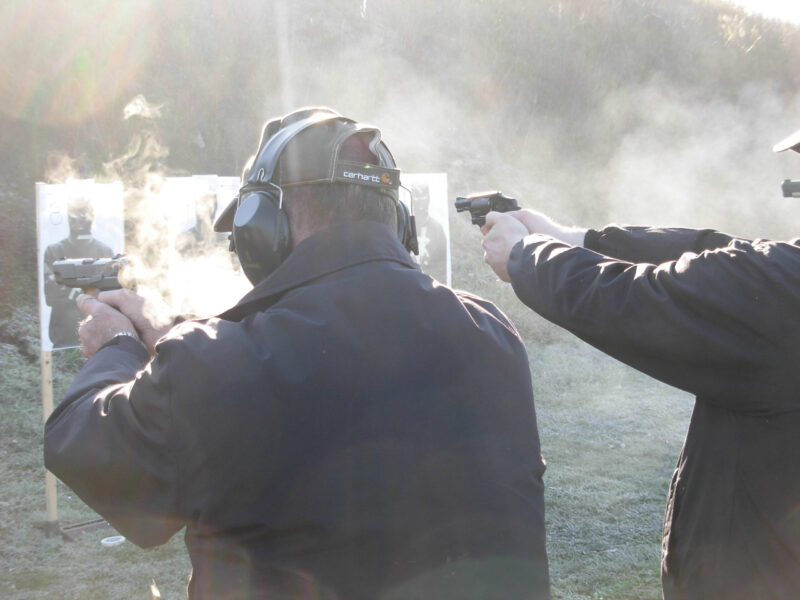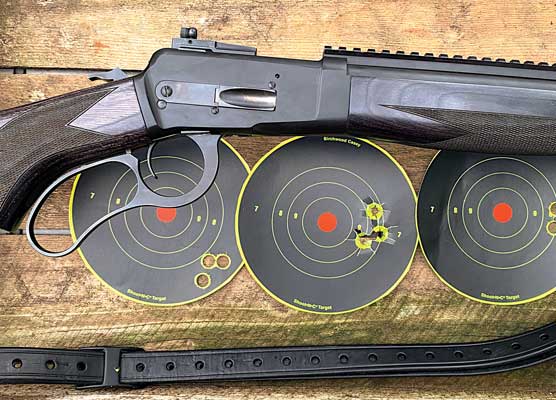Shooting Urban Legends
In The Foot
You Can't Always Believe What You Hear
Ahh, the Urban Legend! The centerpiece of countless gun store discussions, campfire stories, bar tales and heated arguments. As a soft-brained purveyor of gun information, I’ve run across my fair share of firearms-related myths and urban legends.
My own relationship with the phenomenon is quite unhappy. While I enjoy a good apocryphal tale as much as the next fellow, I quickly learned as a gun and outdoor writer that publishing information or opinions contradicting well-accepted folklore is tantamount to telling someone their baby is ugly or their wife is fat. It doesn’t go well.
I first learned this lesson decades ago while writing a weekly outdoor column in the local newspaper. As a scuba-diver, I commented on an old chestnut I’ve now heard in nearly every state and a couple of foreign countries: below a large local dam, there is a catfish so huge a diver sent down to do repairs swam into its mouth and after barely escaping, refused to go into the water ever again.
Most rational people realize a catfish with a five-or-six-foot wide mouth — large enough for a fully equipped diver to swim into — would probably be somewhere in the neighborhood of 30 or more feet long. Think “whale.” Such a critter would be hard to hide even in a major river system.
Stick with me here: it didn’t happen. Yes, there are some large catfish out there, some even weighing upwards of 125 pounds and a mouth pushing 12” in diameter, but this story is just that — a story. However, a small subset of people rigorously believe it, and I’ve got the hate mail to prove it.
Same thing with the legend of various Fish and Wildlife Departments secretly releasing poisonous snakes wholesale into the countryside, along with my favorite — the parachuting badgers into the wilds as some kind of nefarious plot to harm the ecosystem. Why wildlife managers would secretly want to ruin the very thing they are sworn to protect doesn’t seem to occur to the folks who accept this at face value.
Once, when I disputed this story in print, I actually got a half-hearted death threat. The letter writer “knew for a fact” the program was underway because his step-uncle’s cousin’s barber’s niece once met a guy in a bar who knew somebody who helped load airplanes with the chute-equipped badgers.
While writing my follow-on response, I actually called my state Division of Natural Resources and asked if they had secretly been dropping these short-tempered members of the weasel family into the countryside. The lady on the phone asked if I had been drinking.
I also inquired where the agency purchased the wholesale case-lots of badgers needed and how they picked the unfortunate soul who was assigned to fit the biting and clawing beasts into their harnesses. It just didn’t make sense. It’s a good story, yes, but not legitimate — just like most shooting urban legends.
Gun Stories
The gun world is rife with such misinformation, and woe to the gun writer who punctures these cherished “realities.”
I had a good example thrust into my lap, even though it was totally unrelated to journalism. I was assigned to sit on a panel reviewing the final presentations of police officers seeking to become certified instructors.
An earnest young instructor candidate strode to the podium and began his presentation on exterior ballistics. Things were going fine until he endeavored to explain how bullets continue speeding up after leaving the muzzle before they begin to slow down.
I was dumbfounded. The central point of his presentation was wrapped around this dubious “fact.” He had somehow conflated the normal parabolic arc of bullets relative to the sights with an increase in speed. When I tried to gently point out his error, he proceeded to become more and more agitated while using ever-more fantastical — and non-existent — physics to explain the concept.
He was so absolutely sure of the matter someone in his past had likewise explained the concept to him and he could not begin to fathom it might be incorrect. But he was certainly wrong, absolutely, positively 100% wrong.
As an aside, in case you are within the tiny fraction of shooters who still believe in this urban legend, bullets (or any object) can only increase velocity when additional kinetic energy is applied, otherwise it will continually slow down due to friction. Once a bullet leaves the muzzle, no additional energy is added (unless the bullet contains a tiny motor), so it starts slowing down immediately while thrashing its way through air molecules.
The bullet does indeed move in an arc relative to the sightline, but this is intentional because of how the bore line and sights are positioned, not because the bullet is speeding up. If the sighting system were exactly parallel to the bore, the bullet would never strike the point of aim because it continually drops. I might not have explained it perfectly, and there are other minor forces at work, but this is a proven fact. If you are still shaking your head in disbelief, look it up from a reputable physics source.
Anyway, shooting is replete with such urban legends of every variety. If you think magazine springs take a ‘set’ after a few years, they don’t. There is no “ultimate manstopper,” and “Knockdown power” doesn’t really exist. Bullets don’t knock people backward — they might stumble or even launch themselves through the plate glass window if they think that’s what’s supposed to happen when shot, but the kinetic energy of the bullet cannot do it. This is why big guns can be effectively shot by diminutive people. If not, they’d likewise be flung backward out the saloon door upon firing. It’s the old “Equal-but-opposite forces” law of physics.
Meanwhile, cartridges did not “hit harder” or travel faster in the ‘old days’ given the same material and loadings. Manufacturers are not intentionally suppressing a new gun or cartridge because it was too good in testing. The truth is far more mundane — they simply project possible sales versus cost and decide if the product is economically feasible to manufacture.
There is no magic cartridge or bullet design which works every time. The truth is, bullet placement is far, far more important than the flavor — or cost — of the projectile.
The sound of a pump-action shotgun being racked doesn’t always stop a fight. Shooting someone outside your home and then dragging them inside isn’t going to protect you from prosecution and will likely have the opposite effect. Bulletproof vests don’t always live up to their name. Meanwhile, silencers mostly are not.
It’s also an urban legend all gunfights are “Three yards, three seconds, three shots.” Many are, but there are a sizable number which aren’t. This is why you should be able to hit at all reasonable ranges for your particular weapon.
And the “Gun Show Loophole” doesn’t exist. Of course, if you want to get into the Gun Control urban legends (let alone the lies), we’ll need a few hundred more pages.
Any discussion of firearms folklore certainly must mention the Old West. The history of the western U.S. is rife with shooting mythology, but the biggest of all is the “Gunslinger” trope — two steely-eyed men standing mano-a-mano in the street at high noon. Sorry, but it is literally a legend. Only two or three such actual duals have ever been discovered by historians. Sorry, Hollywood!
The Big One
And finally, there is the biggest firearms urban legend of all — “Gun writers are just shills for manufacturers!”
Sorry to bust your bubble on the last one, kids. Writers — and editors and magazines/websites — do have a vested interest in keeping gun makers on their good side, but there are very few (rumored) instances where a lousy gun or load was intentionally given glowing press simply to keep the hogs at the trough. Trying to keep a positive relationship with an industry partner is simply good business sense, but writers walk the fine line between maintaining a relationship so they can have future access to information and products and sharing every blemish.
I’ll never claim we give a total, comprehensively unvarnished report on every topic, but we do try to bring the reader everything they need to know in an entertaining way. So far, it’s worked for almost 70 years.
And you can count on this as a fact, not an urban legend!
—
Want more online exclusives from GUNS Magazine delivered straight to your inbox? Sign up for our FREE weekly email newsletters.




